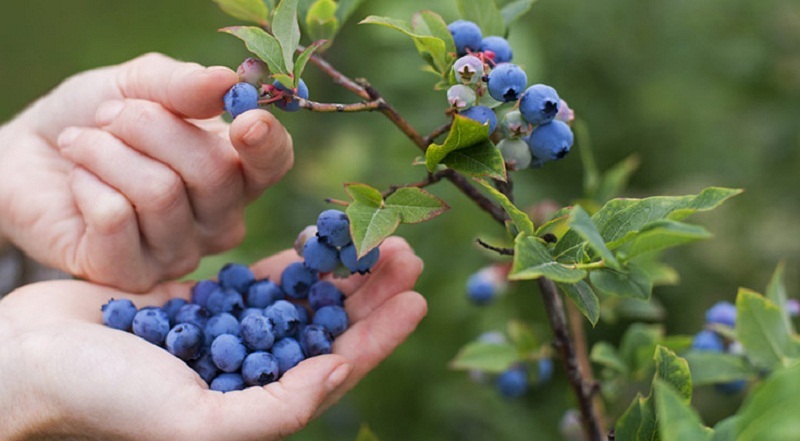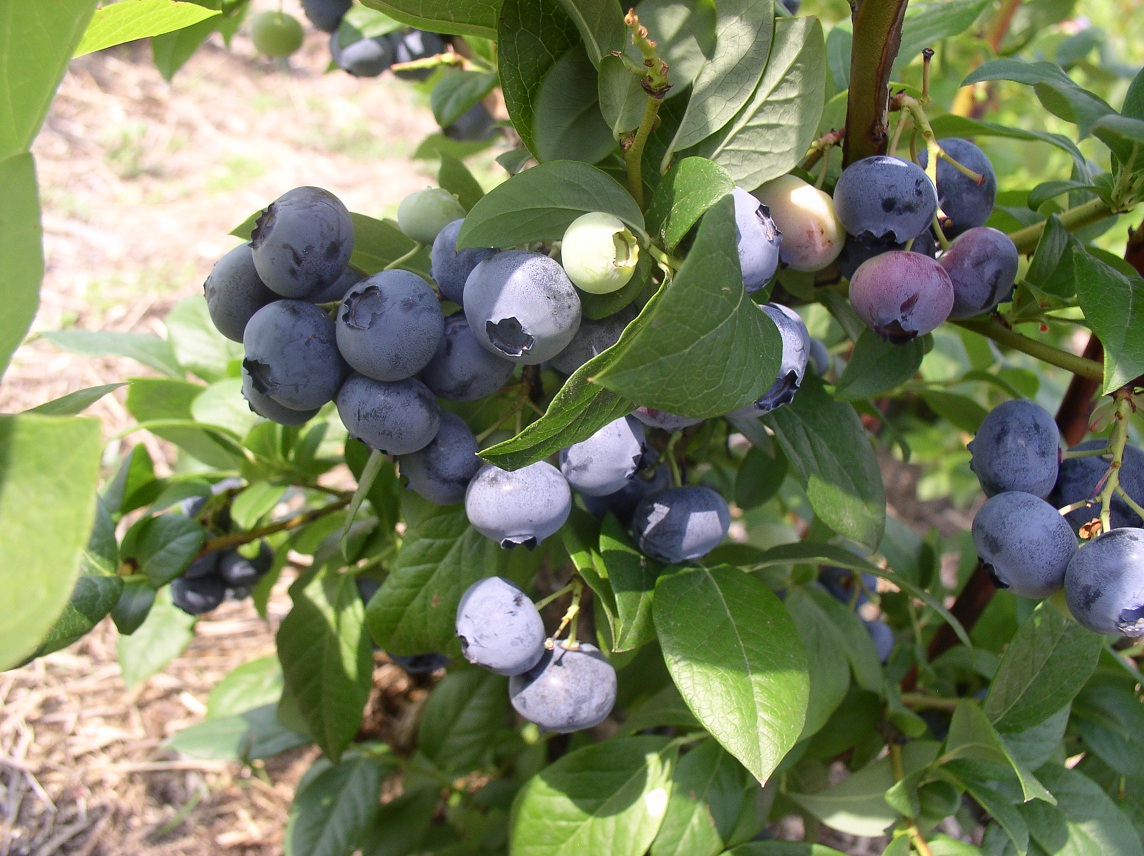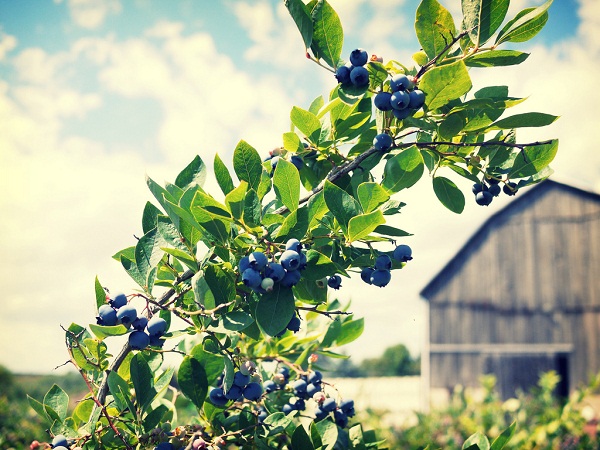Blueberries are a berry shrub that requires regular maintenance and special growing conditions. It has erect branches, small leaves and oblong-shaped fruits. A properly prepared and completed planting process affects its survival rate and further yield. Follow our advice when choosing seedlings, preparing the soil, as well as caring for the bush and the plant will definitely reward you with a generous harvest.
Content
Features autumn planting blueberries
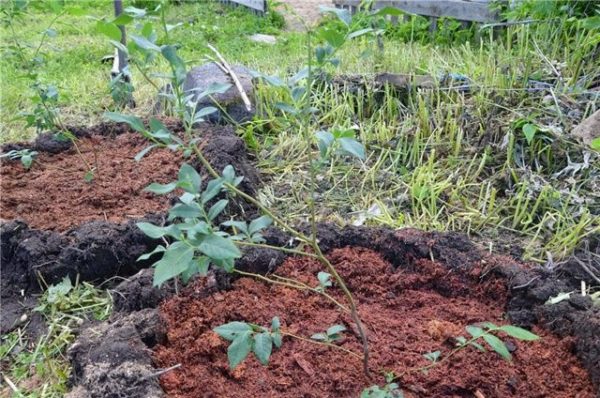 In the autumn, it is allowed to plant in the soil those seedlings that have been grown or sold in flowerpots.
In the autumn, it is allowed to plant in the soil those seedlings that have been grown or sold in flowerpots.
Planting blueberries in autumn differs from spring planting by the need for pruning young bushes, whose age does not reach 12 months. After planting, we trim the weak branches and those on which there is damage. We leave exceptionally healthy and strong shoots, which are also cut off, but for 1/2 length. Seedlings that have reached the age of 2 years do not need pruning.
Planting dates for garden blueberries
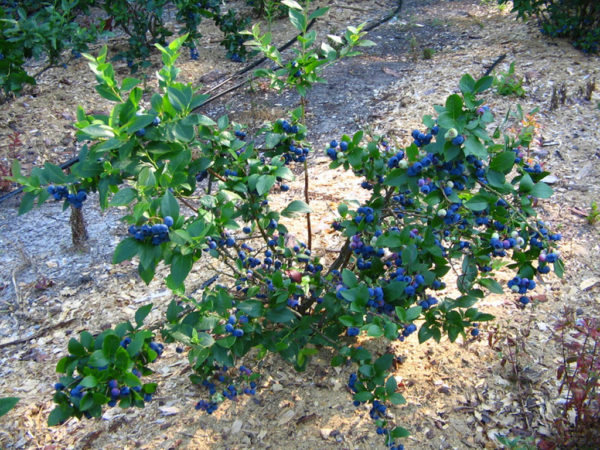 We recommend planting blueberries in autumn at the end of September-October, 30 days before the arrival of negative temperatures, so that the plant has time to take root and not freeze.
We recommend planting blueberries in autumn at the end of September-October, 30 days before the arrival of negative temperatures, so that the plant has time to take root and not freeze.
Planting blueberries in various regions
Wild blueberries are common in Belarus, Ukraine, as well as in some regions of Russia, for example, in Siberia and the Urals.
In the suburbs we recommend plant blueberries the following varieties:
- "Patriot";
- "Duke";
- "Blucrop";
- "Blue Ray";
- Airlibl;
- Toro.
Varieties of garden blueberries differ not only in ripening, but also in bush height. So, in the northern regions we recommend planting:
- "Jersey";
- "Blucrop";
- "Elizabeth";
- "Herbert".
Varieties such as Northland, Bluetta, Weymouth, and Northble are more adaptable to cold, various diseases, and pests. If the region is characterized by sharp temperature differences, winters with little rainfall, we recommend choosing low- and medium-sized varieties for planting that can withstand temperatures up to -34 ° С.
Preparing for planting blueberries
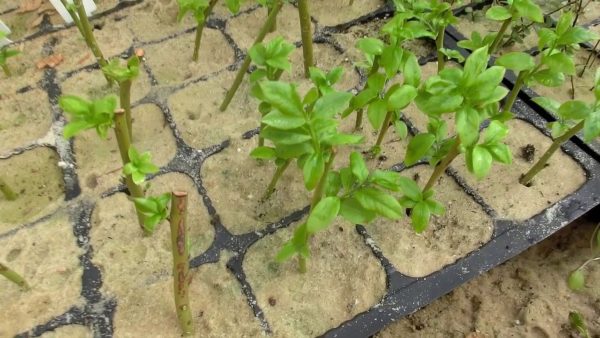 The process of planting a plant in the ground consists of several stages, starting with the selection of seedlings and ending with the planting itself.
The process of planting a plant in the ground consists of several stages, starting with the selection of seedlings and ending with the planting itself.
The choice of "planting material"
We get saplings in special shops or nurseries. We prefer 2-3-year-old bushes, as they have a strong and developed root mass.
Choosing a place to land
Blueberries prefer windless and sunny garden areas. Planted in a shaded area, the plant will bear little fruit, and yield a small crop. The plant feels good in peaty-sandy or peaty-loamy soil, since such soil is looser, which means that it passes air and moisture well.
When choosing a place for planting, it is worth considering that you need to grow blueberries where other plants have not previously grown. Also, we do not plant it in low-lying places, since moisture regularly accumulates in them, which will lead to the death of the plant.
Landing pit preparation
Before planting blueberries, you need to prepare a landing pit. We recommend doing this 1.5 weeks before the expected day of planting, so that the soil has time to settle. The width of the pit, as a rule, is 0.6-0.9 m.
When digging it, it is worth considering the type of soil in the garden area. If peat or sand predominates - the width of the pit should be about 1 m, and its depth - 0.6 m. We fill the bottom with drainage or construct a drainage channel.
In light clay soil, with groundwater at a depth of 2 m, we dig a hole 0.4 m high. In heavy soil - up to 0.15 m, while expanding it to avoid stagnation of water. If clay soil prevails in the garden, then when planting a plant, it is necessary to lay out a layer of drainage.
When preparing the pit in clay soil, we prepare the land for planting ourselves: we combine loamy soil with sand and peat, mixed in a ratio of 1: 3. We lay the pit with acidic soil mixture and mix well.
Planting scheme garden blueberries
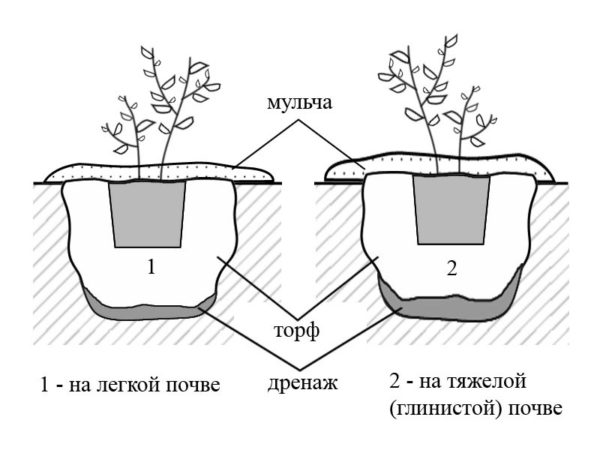 Blueberry bushes are planted in a row from the north side to the south so that they stay in the sun as long as possible. The distance between plants depends on the cultivated species:
Blueberry bushes are planted in a row from the north side to the south so that they stay in the sun as long as possible. The distance between plants depends on the cultivated species:
- low-growing bushes: gaps of 0.6 m;
- high growth: 1-1.5 m.
Between the rows we maintain a distance of 2 m.
Planting a plant
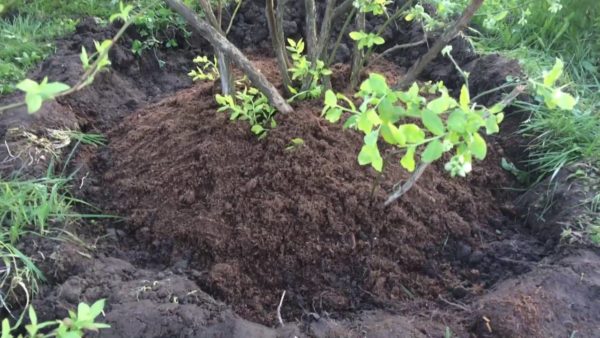 Before planting the plants in the soil, we must untangle and straighten their roots. To do this, lower the seedlings in containers in water and leave for 15 minutes. Next, we take them out of the flowerpots and knead the tangled roots well with our hands. If this is not done, the seedlings will not be able to fully develop and eventually die.
Before planting the plants in the soil, we must untangle and straighten their roots. To do this, lower the seedlings in containers in water and leave for 15 minutes. Next, we take them out of the flowerpots and knead the tangled roots well with our hands. If this is not done, the seedlings will not be able to fully develop and eventually die.
After the pits are prepared and filled with the substrate, we immerse the plants in them 5-6 cm below the previous soil level. We form holes around the bushes and pour 5 l of water into them. After soaking it, mulch the trunk circles with a layer of sawdust.
Where to find acidic soil
Sour peat can be purchased at garden stores, but given the required amount of land for planting bushes, it will cost quite expensive.
Soil acidity can be increased due to forest soil from under coniferous plants, pine needles, special oxidizing agents.
Alternative options for planting garden blueberries
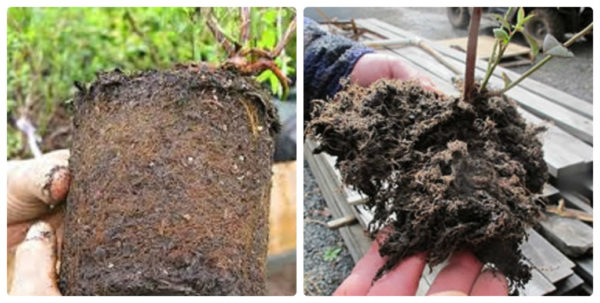 Given that the plant prefers acidic soil, peat is the best option for planting it. However, if another type of soil prevails on the site, then planting blueberries is possible without it.
Given that the plant prefers acidic soil, peat is the best option for planting it. However, if another type of soil prevails on the site, then planting blueberries is possible without it.
Landing without the use of peat
Planting garden blueberries without peat is carried out as follows. We fill the landing pit with soil from the garden plot and acidify it. For this we use oxidizing preparations. Pour the powder into the pit for 15-20 cm and mix it with the planting soil, while adhering to the dosage described in the instructions. The product will dissolve during irrigation and oxidize the soil.As popular methods of oxidation, acids such as oxalic and citric can be used. We prepare a solution at the rate of 1 tsp / 3 l of water. When using vinegar (9%), we take 100 ml / 10 l of water. We water the plant with prepared mixtures 2 times / year: after the end of frost and before preparing the winter culture.
Landing in the crests
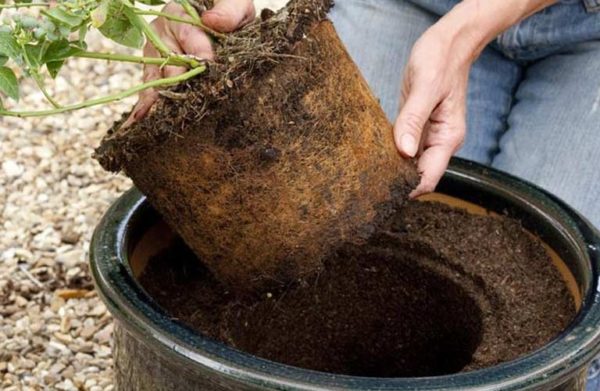 If clayey soil prevails in the garden, we plant the plant using the "comb method". To do this, we tear out a pit for planting up to 15 cm high. Next, on top we form an elevation with sand, earth, sawdust and peat. We place a sapling in the center of the hill, do not deepen it, and scatter sawdust with a layer of up to 12 cm around the stem. So, the root mass of the bush is on the surface, and excess water escapes and does not linger in the ground.
If clayey soil prevails in the garden, we plant the plant using the "comb method". To do this, we tear out a pit for planting up to 15 cm high. Next, on top we form an elevation with sand, earth, sawdust and peat. We place a sapling in the center of the hill, do not deepen it, and scatter sawdust with a layer of up to 12 cm around the stem. So, the root mass of the bush is on the surface, and excess water escapes and does not linger in the ground.
Needles landing
It is also possible to compensate for the absence of peat due to coniferous substrate. We mix the soil from the garden plot with forest soil (we take in the part where spruce and pine trees grow) and the rotted needles of coniferous trees. This mixture is more friable and provides full oxygen access to the roots of the plant.
Autumn blueberry care
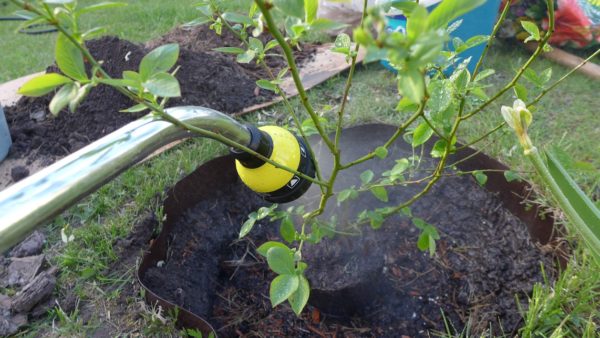 After planting, the plant needs watering, the regularity of which depends on the weather, top dressing and shelter from winter cold.
After planting, the plant needs watering, the regularity of which depends on the weather, top dressing and shelter from winter cold.
Watering and feeding
During the first week after planting, we regularly check the topsoil - it must remain moist. Further, watering depends on the autumn weather. Rainy and cool - additional watering is not required, warm and dry - we water every 4 days, counting 10 l / bush.
In autumn, top dressing is necessary so that the soil is saturated with nutrients that the bushes will absorb in the winter. We use superphosphate and potassium sulfate. We introduce 100 g and 40 g under each plant, respectively.
To fertilize the plant, we tear out a small hole near the bush, up to 0.1 m high, put fertilizer in it and fill it with soil. Dig it with utmost care so as not to damage the roots of blueberries. Next, water the bush with a bucket of water and cover it with a new layer of mulch.
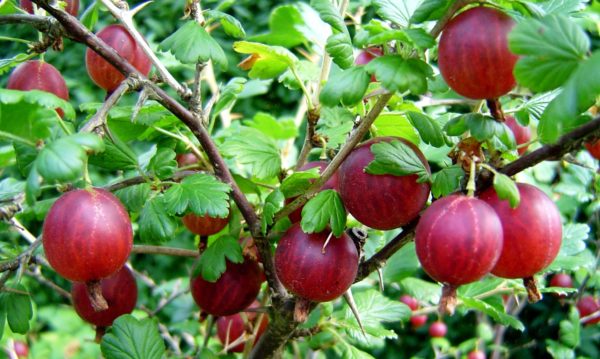 You may be interested in:
You may be interested in:Preparing the plant for winter
Blueberry bushes are able to withstand low temperatures in snowy winters. Lack of snow and severe frosts will lead to freezing of plants. Therefore, we recommend covering the plantings of blueberries with agrofibre, burlap or spruce branches. Do not use plastic wrap. Prepare the plant before the onset of cold weather:
- bend shoots to the ground and fix;
- we cover plants with any breathable material with the onset of frost;
- encircled with spruce branches;
- cover with an additional layer of snow;
- we remove the shelter in the spring, while carefully checking the shoots for traces of freezing, we cut off, if any.
How else can you plant blueberries
For planting and breeding blueberries, you can use not only seedlings. For plant propagation, we use the following methods:
Seeds
This breeding method is the most laborious. In autumn, we get seeds from ripened berries, dry them and sow them in the soil for seedlings to grow. The most suitable conditions for growing seeds:
- air temperature in the range of 23-25 ° C;
- air humidity at 40%.
After planting, we regularly water the seeds, loosen the ground and remove the weed that appears.
Cuttings
Cut the cuttings in the fall after the bushes dropped leaves. We use 8-15 cm cuttings that are located at the root for breeding. We plant them in a peat-sand mixture (1: 3) at an angle.
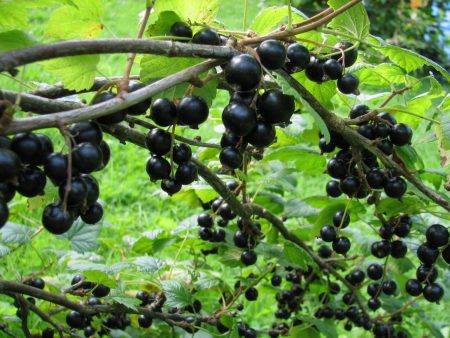 You may be interested in:
You may be interested in:Bends
Blueberry breeding by bends is not always successful. Choose the longest branch and tilt it to the ground, dusting with sawdust.The abstraction will take root in 2-3 years and only after that we separate it from the main bush.
In order to properly plant blueberries and grow a healthy fruit-bearing plant, you must adhere to the basic rules for choosing "planting material", the place of planting and soil preparation. Also, do not forget to follow our step-by-step planting instructions.

